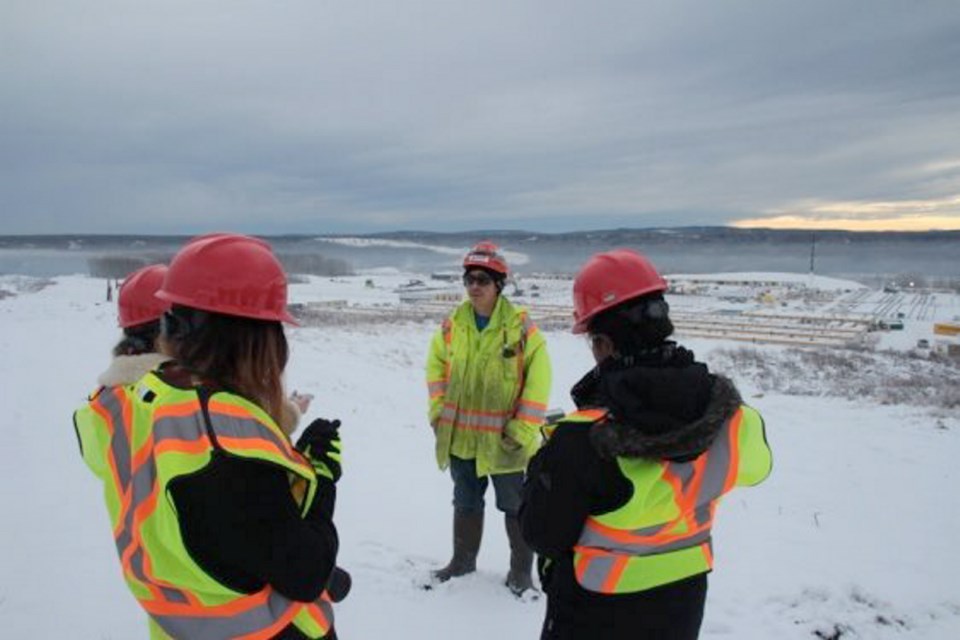Christopher Blake’s work day begins at 6 a.m. A surveyor by trade, he has been working in the bush for about ten years.
Recently, he has taken on a job close to home, only 15 minutes away — something he appreciates, rather than having to make long drives out to work along muddy roads at dark.
That project, however, is the subject of quite a bit of scrutiny and opposition — the Site C dam, one of the largest infrastructure projects ever attempted by the B.C. government.
After months of construction, B.C. Hydro allowed local media to tour the Site C dam construction site.
While photographs were taken of the project work form the air, and B.C. Hydro has taken their own photos of work from the ground, Friday marked the first time since construction started on July 27 that media were allowed to get up close to the early construction of the $8.8-billion dam.
Already, over one million cubic metres of material have been exacavated and relocated on the north bank side of the river near Fort St. John, making three large ridges where once there was only bush and dirt.
Surrounding that are large piles of timber. Some of the wood has been taken already to local mills for sale. (Hydro, for its part, expects that Fort St. John mills can handle all the wood that will be up for sale.)
But the road is nearly lined with the trees that Hydro cannot sell, which will either be mulched up, or in some cases burned.
These huge piles of trees represent only a small portion of the work to come. Hydro has not finalized the main civil works contract, which represents the lion’s share of the work. Hydro expects that to happen by the end of 2015.
The work itself is expected to go on for years. Various contractors can work various schedules, and Hydro allows them to work 24 hours a day, seven days a week, 365 days a year, meaning the work could be literally non-stop.
There’s a lot of these workers to come, too.
Hydro’s long-term parking lot is expected to accommodate nearly 1,000 cars for workers like Blake.
For his part, Blake hopes to see the project through.
“It’s been really fun (at Site C),” he said. “There’s a lot of people, a lot of support behind it … B.C. does need power.”
That power will come at someone else’s expense, though.
The project has come under opposition for flooding out homeowners’ properties, and the negative impact it will have on the exercise of local First Nation treaty rights.
Both these groups are attempting to fight the dam in the courts, and hope to stop it through legal means.
“To each his own,” said Blake, when asked about this type of opposition. “Everyone has their own opinion … it’s a beautiful valley. It’s not like there’s not a footprint, but there’s going to be a lot less footprint than other options.”



